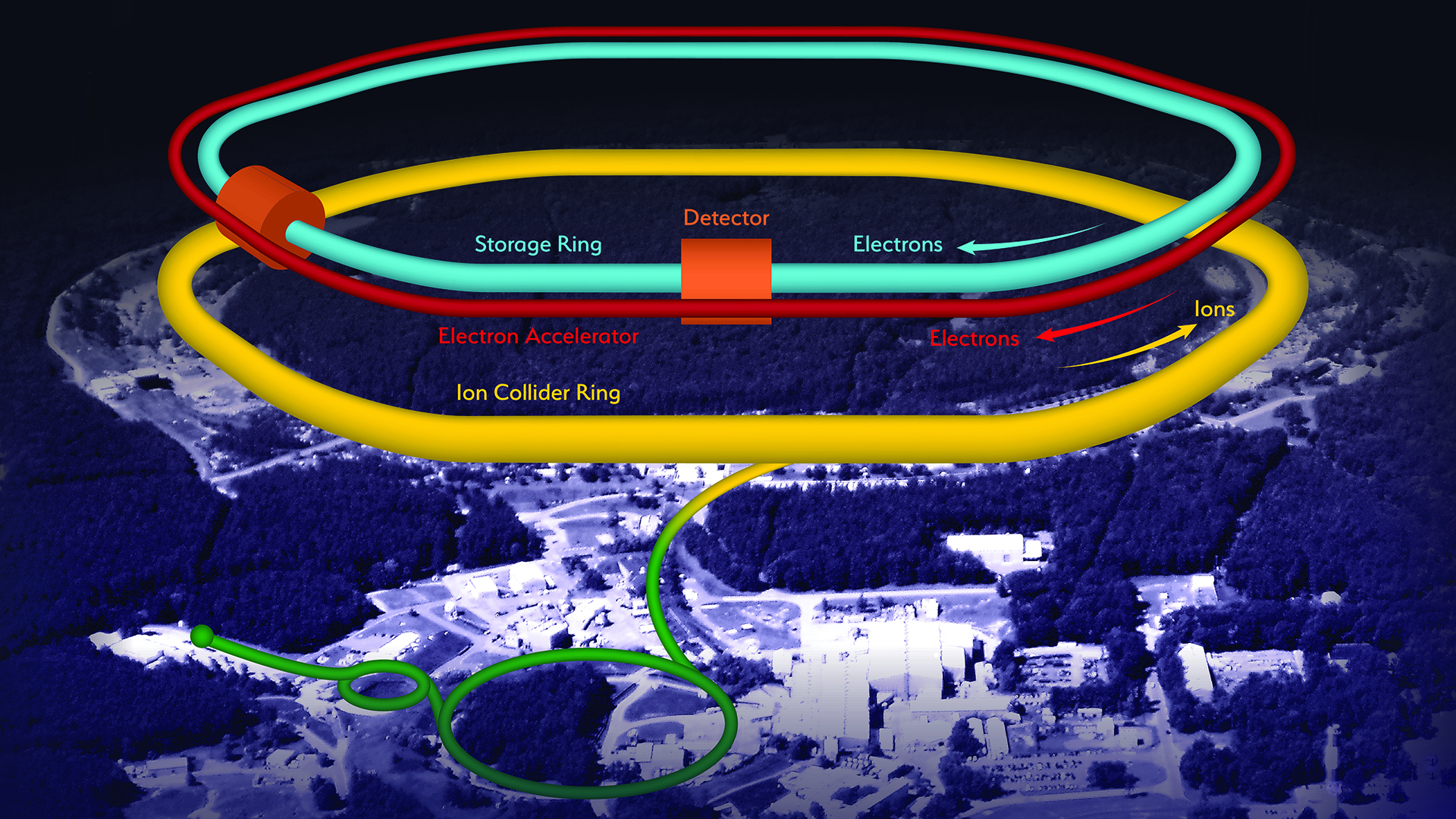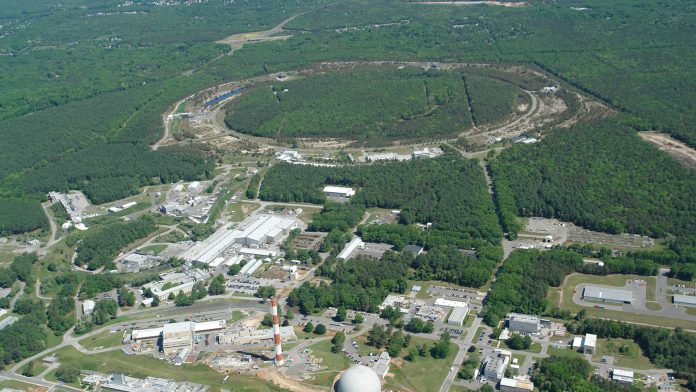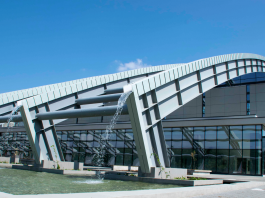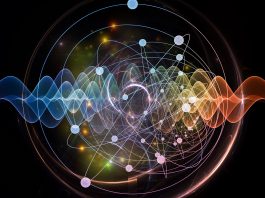Timothy Hallman, Associate Director of Science for Nuclear Physics at the US Department of Energy, outlines the key objectives of the Office of Science as it strives to gain answers to complex questions surrounding nuclear matter.
The US Department of Energy (DOE)’s mission is to ensure the security and prosperity of America by addressing its energy, environmental, and nuclear challenges through transformative science and technological solutions. Through its Office of Science, the DOE Office of Nuclear Physics supports research in the physical sciences at over 300 institutions across the country, including universities, national laboratories, non-profit organisations, and private sector institutions.
The Office administers research through several major programme offices across a broad range of disciplines, including Nuclear Physics. The Nuclear Physics programme seeks to solve the great mystery of how the Universe was formed, by discovering, exploring, and understanding all forms of nuclear matter. The quest to understand the properties of different forms of nuclear matter requires long-term support for both theoretical and experimental research efforts.
The Nuclear Physics programme supports four scientific user facilities, which provide opportunities to study several science frontiers, including the synthesis of the heavy elements in the cosmos. Each of these facilities have unique capabilities that advance the programme’s scientific mission.
To solicit research proposals with the aim of furthering future discovery, the Office of Science issues many funding announcements every year. In January 2022, the DOE announced $8m for theoretical research in nuclear interactions, nucleon structure, and properties of nuclei and nuclear matter via collaborations. This is the third round of its Nuclear Theory Topical Collaborations, which bring together leading nuclear scientists to address well-defined topical areas.
In conversation with The Innovation Platform, the DOE’s Associate Director of Science for Nuclear Physics, Timothy Hallman, details the overall aims of the DOE’s work in nuclear physics and explains how the Office works to achieve its key goals.
What are the current goals and objectives of the Office of Science for Nuclear Physics?
The overarching goals that our Office is working towards are set out in a document called the Long-Range Plan for Nuclear Science. Every five to seven years, we commission a community-driven exercise to establish what the vision for the field will be for the next five to ten years. The most recent document, released in 2015, includes four top recommendations.
The first key recommendation is to extract the science from the facilities we are already operating, or finishing the construction of, including the Relativistic Heavy Ion Collider at Brookhaven National Laboratory, the Continuous Electron Beam Accelerator Facility (CEBAF) at Thomas Jefferson National Accelerator Facility (TJNAF), The Facility for Rare Isotope Beams at Michigan State University, and the Argonne Tandem Linac Accelerator System (ATLAS) at Argonne National Laboratory. Another focus is to work on deploying a ton-scale neutrino-less double beta decay experiment. The third recommendation is to construct a high-luminosity, high polarization electron-ion collider (EIC). Lastly, the fourth focus is to invest in more modest cost instrumentation to allow scientists to take advantage of the capabilities at the facilities we operate.

In January 2022, the DOE announced $8m in funding for research focused on the fundamental theories for nuclear interactions and nuclear matter, as part of the Nuclear Theory Topical Collaborations initiative. Can you outline the hopes for and importance of this funding?
Nuclear theorists are usually fiercely independent and fiercely competitive, and they normally work on their own and do not collaborate. However, there are some important problems in nuclear physics that can be answered much more efficiently when theorists work together.
The Topical Collaborations programme is a vehicle launched by our Office around five years ago, welcoming proposals from teams of nuclear theorists. The teams consist of individuals who have complementary technical capabilities, as opposed to single principal investigators (PIs) who only focus on one strong area. The parameters of the programme stipulate that the collaborations should propose to resolve a particularly important problem in nuclear physics within a fixed timescale of five years.
As opposed to experimentalists, who often work in teams to carry out complex investigations, these Topical Collaborations presented an entirely new way of working for many theorists. Since their launch, we have witnessed great interest and they appear to work very well.
As I mentioned previously, we are working towards implementing the ton-scale neutrino-less double beta decay experiment. There is a certain answer that the neutrino-less double beta decay experiment needs from theory – the technical term is nuclear matrix elements. Currently, there is great uncertainty in the value of the matrix elements. An approved topical collaboration aimed to reduce the uncertainty in those nuclear matrix elements, so that, when the experiment is performed, the interpretation of the data would be much more definite. This is an example of where nuclear theorists have worked together to answer a question particularly relevant for the experimental nuclear physics programme, so that the results of the experiments could be understood more clearly and concisely.

In December 2021, the DOE also announced $5.7m for research in Artificial Intelligence and Machine Learning for nuclear physics accelerators and detectors. Can you explain more about the projects that this funding will support and what the main objectives are?
With the great advances in computer chips and electronics, there has been a revolution in recent years in the ability of computers to tackle problems, find answers, and use these answers to automatically resolve a more complex problem. This is referred to as Artificial Intelligence (AI).
Computers cannot replace humans, but, in some cases, the systems can learn how to resolve problems or questions without the need for human intervention. For example, AI is now used for collision avoidance in some vehicles: if the car recognises a barrier or an obstruction in the road, the brakes will deploy automatically. Many vehicles also now offer ‘hands-free driving’ capabilities, which is another example of AI.
In some sense, particle accelerators are no different to cars. They have a lot of complex interrelations between electronics that must be optimised, so it is possible for the accelerator to become instrumented with sensors to detect problems with its operation and automatically fix them without the need for an operator. Where human intervention was once required to address a problem, the accelerator can detect an issue and fix it itself, avoiding unnecessary downtime. That is what we call optimisation of operation and control of accelerators.
An example of how we are using accelerators as a testbed to implement computer algorithms is at the Continuous Electron Beam Accelerator Facility at TJNAF. Here, the lab team repeatedly experienced a fault in the machine which they referred to as a ‘trip’. Whenever the accelerator tripped out, the machine operator would need to clear the condition and restart the acceleration of the beams. Using AI, the accelerator can now sense when the condition is about to occur and take steps to prevent the condition from continuing, significantly reducing the number of trips experienced. This means that the uptime for the accelerator is now much greater and, as beamtime is costly, it is also significantly more cost-effective and productive.
The funding does not just have to be used for accelerators, however. It could also go towards the development of software to achieve pattern recognition in the data from a particle detector. This means that we can now very efficiently search for something extremely rare, as the computer will recognise the pattern that it needs to find, without human intervention.
What are your plans and hopes for 2022 within the Office of Science for Nuclear Physics?
Our primary goal is to understand all forms of nuclear matter – including some that only existed in the past at the beginning of the Universe – to benefit science and commerce, medicine, and national defense.
In terms of our top priorities, a key target is to make further progress on implementing the EIC. That is a very important accelerator for the future of global nuclear physics. Even though it is not set to begin operation until the early 2030s, there is already an international community of over 1,100 users from a great number of countries and institutions. It has been an international effort from the start.
Another high priority is to begin the science programme at the Facility for Rare Isotope Beams at Michigan State University. The construction of that accelerator will be completed in the spring of this year, and so I am sure that there will be a grand celebration to recognise this. Even more importantly, the science programme will begin, predominantly focusing on the understanding of how heavy nuclei that have a lot of neutrons, like gold and platinum, are synthesised in the cosmos in outer space. The prevailing conjecture at the moment is that those things are primarily produced in mergers of neutron stars. We hope, with the Facility for Rare Isotope Beams, to confirm that conjecture and make further observations and conclusions.
We have a whole pallet of important research efforts. Another important start we hope to make is on the deployment of a ton-scale neutrino-less double beta decay experiment. The science there, if neutrino-less double beta decay is observed, would be profound. It could explain why the neutrino mass is exceedingly small and much smaller than any other particle we know about, as well as what the mechanism is that nature has for producing a neutrino mass. It could explain why there is more matter than antimatter in nature currently. Another possibility is that it could tell us about a whole new set of fundamental particles that we currently do not know about, such as a currently unseen heavy neutrino that is a partner to the light neutrinos that we do see.
As a continual focus, we strive to support all our researchers in the field and help to facilitate their progress. We service almost 300 university awards and the national user facilities I mentioned, so the care of those is another important goal we have. We have to do this within the constraints of whatever appropriation we receive from Congress, which sometimes requires optimisation, prioritisation, and compromise. It is a full-time job to keep the whole enterprise healthy and moving forward.
Timothy Hallman
Associate Director for Nuclear Physics of the Office of Science
US Department of Energy
www.energy.gov/science/office-science
https://twitter.com/doescience
Please note, this article will also appear in the ninth edition of our quarterly publication.









